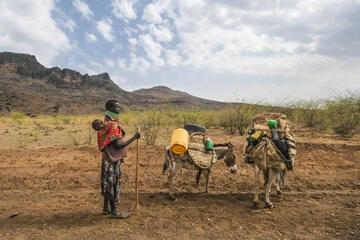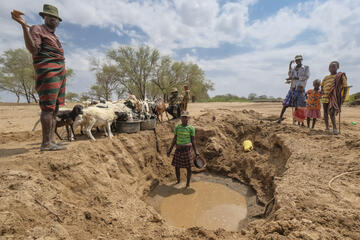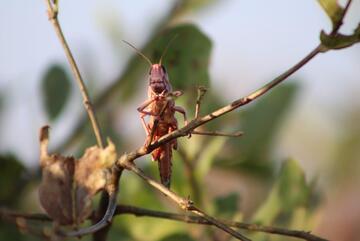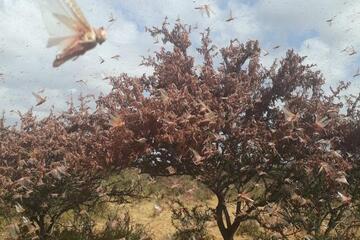Kenya: Locust plague in drought region
For years, Kenya has had far too little rain. Time and again, the regular rainy periods fail completely. The country's president has therefore declared a state of emergency for the northern regions of the country in September. More than two million people are threatened by acute malnutrition. Now another disaster is threatening the food situation in the country: locusts.
13 swarms of desert locusts reportedly arrived at the in November in Mandera County. According to FAO projections, the swarms are moving within Mandera and west towards Moyale in Marsabit County. The swarms are mature, yet unable to lay eggs currently, suggesting that they might still migrate a relatively long distance. The formation of new swarms would be about mid-December and could pose a potential threat to drought-impacted households in North Eastern Kenya as well as South Eastern Ethiopia.
Humans and nature have not yet recovered from the last locust infestation
When the insects hatch, then young and very hungry grasshoppers feast on the few edible foods that are left. "A disaster, especially in the current situation," says Tiemo Kummer, project officer for Kenya at Johanniter International Assistance.
“We experienced the first swarm of desert locusts early 2020, which has impacted us negatively and if these newly reported swarms in Mandera arrives it will pose severe challenges to livestock and food security. Currently we are losing our livestock to drought and this was contributed by experienced desert locusts, the loss of forage land acts as a driver of transhumance where we shift to new locations to find available forage. This is a significant threat to livelihoods of the 80% pastoral communities in Isiolo’’, Abdikarim Hussein, Community volunteer in Merti sub County in the north of Isiolo county.
Food Vouchers for Affected
Kummer was just on site in Isiolo County to talk to community leaders and get an idea of the situation. "The food situation is getting worse, by December 2021 half of the 268,000 inhabitants in Isiolo will be hungry. The crops have dried up and the livestock are dying as there is no water either," he reports. Water is the biggest problem. The hoped-for rain will fail again, the wells are all too saline. The next working water source is 19km away.
To save the people from the worst, Johanniter`s partner organisation MID-P is currently distributing food vouchers to the affected population in Isiolo. "With these, people can buy essential staple foods at the local market and thus feed their families," Kummer further explains. "In addition, this way we support the people who can still sell food."




